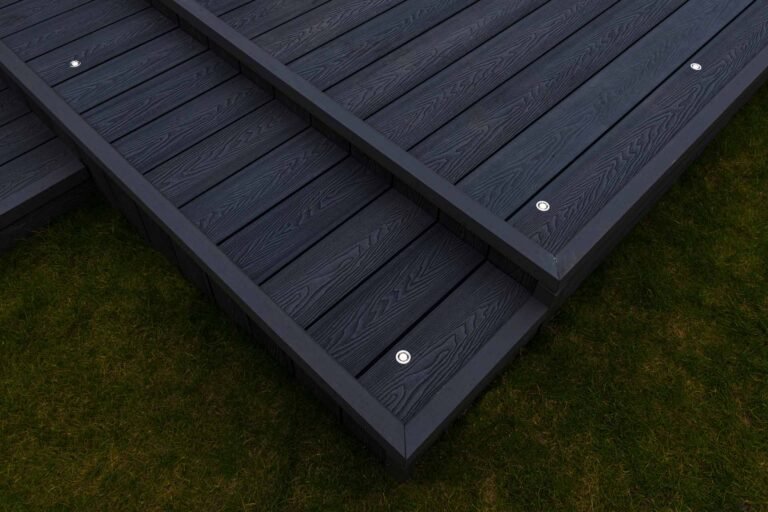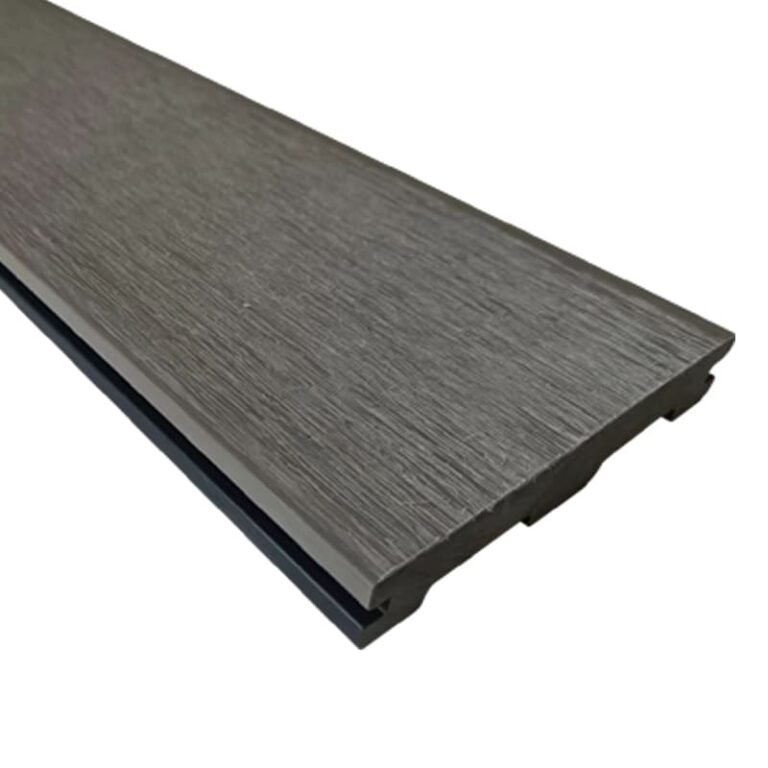Tired of sanding and staining your deck? Traditional wood demands constant work, costing you time and money. Low-maintenance composite decking offers the beauty of wood without the endless upkeep.
Low-maintenance composite decking is a durable wood alternative made from a mix of wood fibers and recycled plastic. It resists fading, staining, and mold, so you won't need to paint or seal it. Simple cleaning is all it takes to keep it looking great.
This material sounds almost too good to be true, right? I have been in the WPC industry for over 12 years, and I have seen it all. While composite decking is incredibly durable, it is not indestructible. Understanding what can damage it is key to making sure it lasts. Let's look closer at what you need to know to protect your investment and keep your customers happy.
What ruins composite decking?
Worried your beautiful new deck might get damaged? Small mistakes in care or installation can lead to big problems like warping or cracking. Knowing the main causes helps you easily avoid them.
The biggest enemy of composite decking is prolonged water exposure from poor drainage, as the wood fibers can swell. Other major issues include incorrect installation that doesn't allow for expansion, and deep scratches from sharp, heavy objects.
In my experience, the issues that ruin composite decking fall into three main categories. Understanding them is the best way to prevent them from happening. It’s not about the product failing, but about how it’s treated after it leaves my factory.
The Problem with Trapped Water
Composite decking contains real wood fibers mixed with plastic. This combination gives it strength and a natural look. However, if water is left sitting on the deck for long periods, those wood fibers can slowly absorb the moisture. This is the biggest risk. When the wood fibers absorb water, they swell. This swelling can cause the board to deform, bubble, or even crack over time. This isn’t a quick process, but a deck with poor drainage that constantly has puddles is a deck at risk. Good ventilation underneath and a clear path for water to run off are essential.
The Importance of Correct Installation
I cannot stress this enough: almost every major problem I have seen with a composite deck comes back to incorrect installation. The material naturally expands in the heat and shrinks in the cold. It must have room to move. Installers must leave specific gaps between the boards and where they meet any structure, like the wall of a house. Without these gaps, the boards will push against each other when they expand, leading to buckling and warping. Proper ventilation underneath the deck is also critical to prevent moisture buildup.
Surface Scratches and Physical Damage
Composite decking is tough, but it's not scratch-proof. Dragging heavy metal furniture, dropping sharp tools, or dragging a barbecue grill across the surface can leave permanent marks. While light scuffs can sometimes be cleaned or gently brushed out, deep gouges that cut into the board are there to stay. It’s important to treat the deck with care. I always recommend using furniture pads and lifting heavy items instead of dragging them.
What not to put on composite decking?
Unsure what is safe to use on your composite deck? Using the wrong item or chemical can cause permanent stains or damage the surface. A few simple rules will keep a deck looking brand new.
Avoid placing rubber-backed mats on the deck, as they can trap moisture and cause discoloration. Also, steer clear of harsh chemicals like bleach for cleaning. Never use rock salt for de-icing, as it can damage the surface and void the warranty.
Protecting a composite deck is more about what you don't do than what you do. I always provide our partners with a clear guide on this. Certain everyday items and cleaning agents can cause unexpected damage. The key is to avoid trapping moisture and using harsh, abrasive products.
Everyday Items to Use with Caution
Some items seem harmless but can cause serious problems. Rubber or latex-backed mats are a common mistake. They trap heat and moisture, which can lead to ugly discoloration on the deck surface underneath. Instead, I suggest using woven or vinyl-backed mats that allow the deck to breathe. Similarly, fire pits and grills need a protective pad underneath them. The intense heat can melt or scorch the deck, and hot grease can leave stains that are very difficult to remove. Finally, be careful with heavy planters. Placing them directly on the deck can trap moisture and debris. It is better to put them on stands to allow for proper airflow and drainage.
Cleaning and Maintenance Don'ts
When it comes to cleaning, gentle is always better. Harsh chemicals can do more harm than good. Below is a simple table I share with our distributors to make this clear.
| Do Not Use | Why Not? | What to Use Instead |
|---|---|---|
| Bleach or Harsh Chemicals | Can discolor and weaken the deck surface. | Mild soap and water. |
| Rock Salt or Calcium Chloride | Is abrasive and can cause pitting or staining. | Sand or a composite-safe ice melt. |
| High-Pressure Washer (too close) | Can etch grooves and permanently damage the board. | Use a fan tip nozzle from at least 12 inches away. |
| Wire Brushes | Scratches and ruins the surface finish. | A soft-bristle brush. |
Following these simple rules will ensure the deck's longevity and appearance for years to come.
Will composite decking warp in the sun?
Concerned about your deck bending under the hot summer sun? A warped deck is unsightly and unsafe, which is a big worry for any property owner. With proper installation, warping is something you will not have to worry about.
No, composite decking will not warp from sun exposure if it is installed correctly. The material is designed for temperature changes. Warping is almost always caused by an incorrect installation[^1] that doesn't leave enough space for natural thermal expansion[^2].
This is one of the most common questions my partners and I get from end-users. People see the plastic content and immediately worry about it melting or bending in the heat. The truth is, high-quality composite decking is extremely stable. Warping is a structural issue, not a material failure.
Understanding Thermal Expansion
Every building material expands when it gets hot and contracts when it gets cold. A long composite deck board can grow in length by a few millimeters on a very hot day. This is a normal physical process. Our manufacturing process is designed to manage this. Darker colored boards will absorb more heat and expand slightly more than lighter ones, which is an important fact for installers to consider when planning the project. Acknowledging this movement is the key to preventing any problems. If you pretend it doesn't happen, you will have issues.
How Proper Installation Prevents Warping
Since we know the boards will move, the solution is simple: give them space to do so. In my 12 years in this business, every case of "warping" I have investigated has traced back to installation errors. There are two main rules. First, proper gapping[^3]. Installers must leave a small gap between the ends of the boards and at the sides where they meet a wall or post. This gap gives the board a place to expand into without pushing against another board. Second, proper joist spacing. The deck frame underneath must have joists that are close enough together to fully support the boards. If they are too far apart, the boards can sag between them over time, especially under heat and heavy foot traffic. When installed correctly, the boards will stay straight and flat for their entire lifespan.
Does water drain through composite decking?
Worried about puddles forming on your deck after it rains? Standing water can be a slipping hazard and create a place for mildew to grow. Correctly installed composite decks are designed to manage water very effectively.
Water does not drain through the solid composite boards because they are waterproof. Instead, water drains off the surface and between the gaps in the boards. A slight slope during installation is essential for water to flow away and not pool.
People often get confused about how water behaves on a composite deck. They know it's waterproof, but they wonder where the rain goes. The answer is simple and relies on a well-planned installation. It’s not about magic; it's about smart design.
Impermeable Surface vs. Overall Drainage
First, let's be clear: the boards themselves do not absorb water. Unlike porous wood, a composite deck board has a solid, impermeable surface. Water will bead up on it, just as it does on a plastic container. This is a major advantage because it prevents rot and decay from within the board itself. However, because the water cannot soak in, it has to go somewhere else. This is where the overall deck design comes into play. The drainage system is created by the way the deck is built, using gaps and slope to direct the water away.
The Role of Slope and Gapping
To prevent puddles, every deck should be built with a slight slope. This is a fundamental rule of construction. The deck should be angled gently away from the house, usually at a grade of about 1/4 inch per foot. This slight angle is often unnoticeable to the eye, but it’s enough to use gravity to pull water off the deck surface. As the water flows, it drains away through the gaps that are intentionally left between each board during installation. These gaps are essential for both drainage and ventilation. I always tell our distribution partners to emphasize this point to their customers and installers. A simple slope is the difference between a perfect, dry deck and one with frustrating water issues.
Conclusion
Low-maintenance composite decking is a smart investment. With correct installation and basic care, it stays a durable and beautiful outdoor space, free from the hassles of wood.
[^1]: Learn how proper installation can prevent major issues and ensure the longevity of your deck.
[^2]: Learn how temperature changes impact your deck and how to install it correctly to prevent issues.
[^3]: Understand the importance of gapping to allow for expansion and prevent warping in your deck.









